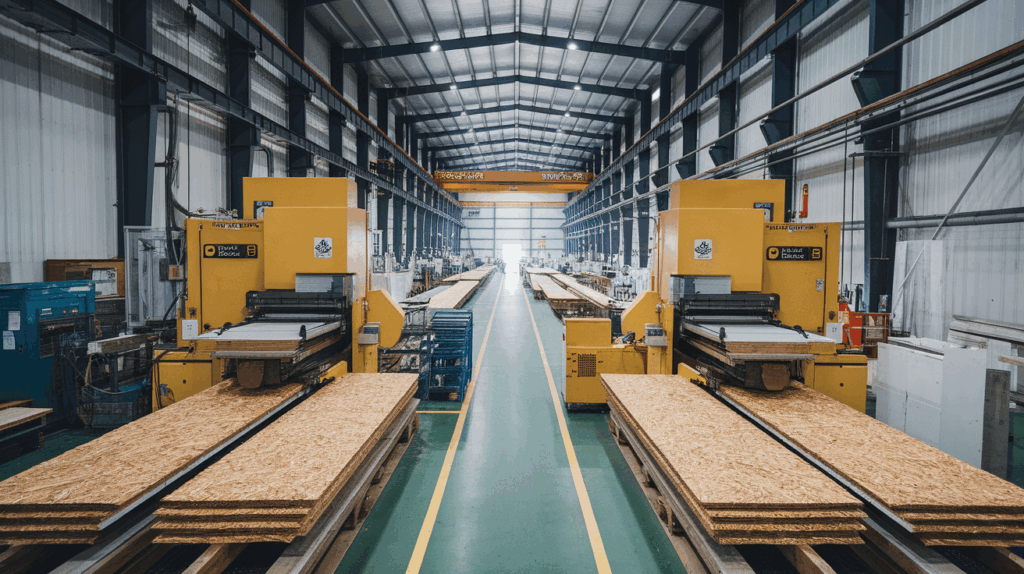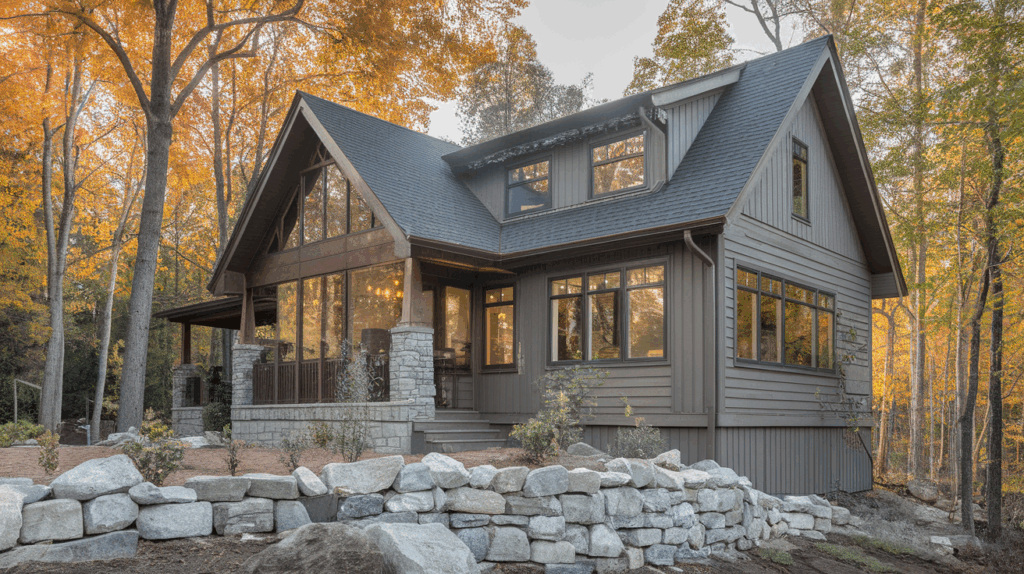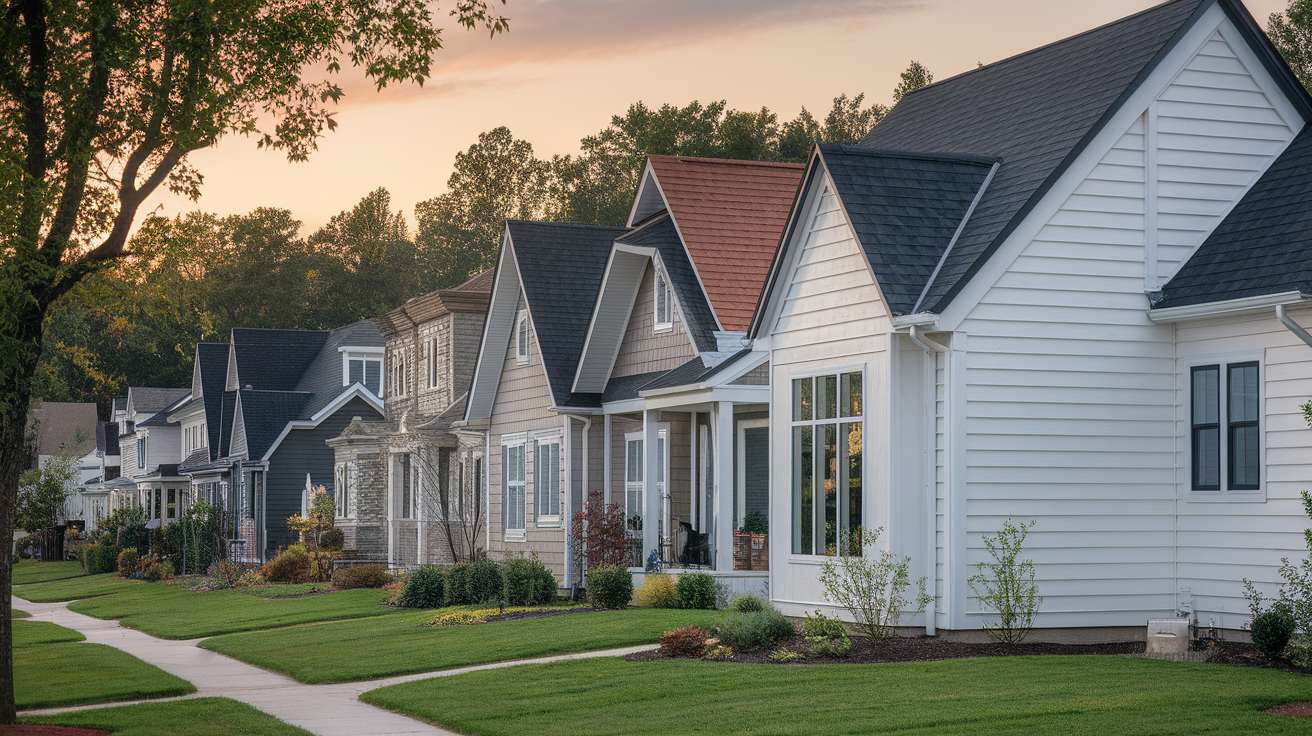I’ve always believed that a home’s exterior should look just as good as its interior. When I started looking into siding options, I kept hearing about composite siding.
At first, I wasn’t sure what it was, so I did a little digging. It turns out that composite siding is a popular choice for many homes today, and for good reasons.
It’s made from a mix of materials, and it’s built to last. It looks nice, doesn’t need much care, and can handle tough weather.
I like things that make life easier, and composite siding seems to do just that.
In this blog, I’ll explain composite siding, why people use it, and what makes it a solid choice for homes. If you’re curious like I was, this simple guide will help you understand the basics.
What Is Composite Siding?

Composite siding is a type of material used to cover the outside of a home. It helps protect the house from weather, dirt, and damage.
Composite siding is made by mixing two or more materials, often wood fibers, plastic, and bonding agents. The mix is then shaped into boards or panels.
Unlike natural wood, composite siding does not rot or attract bugs. It also needs less care over time. You can paint it or buy it pre-colored.
How Is Composite Siding Made?

The goal is to create siding that looks good, lasts long, and resists damage from weather, bugs, and moisture:
1. Gathering the Materials
The first step is collecting the raw materials. Most composite siding uses a mix of:
- Wood fibers or wood chips (leftovers from sawmills)
- Plastic resins or recycled plastic
- Binders and glues to hold everything together
- Additives to prevent mold, water damage, or UV fading
In some cases, cement and sand are added, like in fiber cement siding.
2. Mixing It All Together
Once the materials are ready, they are put into a large mixer. Everything gets blended well, so the fibers and plastic stick together.
The glue helps keep the mix strong and even. Additives are added here to make the mix water-resistant or fire-resistant.
3. Forming the Siding
Next, the mix is poured or pressed into long, flat sheets or molds. Machines shape the siding into planks or panels.
Depending on the design, it can be given a wood grain pattern, a smooth finish, or even a stone look.
The mixture is also flattened and trimmed to make sure all pieces are even in size and thickness.
4. Curing or Baking
After forming, the siding undergoes a heating process called curing. This step dries out the mix and makes it hard.
Heat and pressure lock the materials into shape, making the siding stronger and more stable.
5. Cutting and Finishing
Once the boards are cured, they are cut into final sizes. Edges are trimmed and smoothed. Then, they may be:
- Painted or stained
- Coated with a UV-resistant finish
- Treated with sealers to block moisture
- Some siding is left unpainted so homeowners can pick their color. Others come pre-finished in many colors and styles.
6. Packing and Shipping
Finally, the siding boards are stacked, packed, and sent out to stores or builders. They are ready to be installed on homes, sheds, or buildings.
Types of Composite Siding

There are a few different types of composite siding. Each type has its own look and feel. Some common ones are:
1. Wood-Plastic Composite: This siding is made from wood fiber and plastic. It is strong and can handle tough weather. It looks like wood but doesn’t rot.
2. Fiber Cement Siding: This type is made from cement, sand, and cellulose fibers. It’s one of the most popular types of composite siding. It is fire-resistant and lasts a long time.
3. Engineered Wood Siding: This siding is made from wood chips or strands mixed with resin. It looks more like real wood than other types, and it’s also lighter and easier to install.
4. Laminated Siding: This has layers of different materials. One side faces out and gives the siding its look. The inside layers make it strong.
Why Choose Composite Siding?

When picking siding for your home, you want something that looks nice, lasts a long time, and doesn’t take a lot of work. Composite siding checks all these boxes.
1. It Looks Like Real Wood
Many people love the look of wood. It feels warm, natural, and classic. But real wood needs a lot of care.
It can rot, warp, or get eaten by bugs. Composite siding gives you the wood look, without the problems.
Some types even have deep wood grain patterns that look like cedar or oak. To match your home, you can choose from smooth, rough, or textured styles.
2. It’s Built to Last
Composite siding is made to withstand years of wear and tear. Most types are strong against rain, wind, heat, and snow.
It doesn’t crack or peel easily. Some brands offer warranties for 30, 40, or even 50 years.
This means you won’t have to replace your siding anytime soon. It holds up better than regular wood and is tougher than vinyl.
3. It Needs Less Upkeep
Let’s face it, no one wants to spend every summer painting or fixing siding. One of the biggest reasons to choose composite siding is that it’s low-maintenance.
Most types don’t need painting or staining often. A simple rinse with water is usually enough to keep it looking fresh.
You won’t have to worry about rot, termites, or mold like you would with wood.
4. It’s Strong and Durable
Composite siding is tough. It can handle bumps from lawn tools, kids playing outside, or a stray baseball. It’s more damage-resistant than vinyl or real wood.
I like it for busy homes or places with strong winds, flying debris, or heavy storms. Many types are also fire-resistant, which can give you extra peace of mind.
5. It Comes in Many Styles and Colors
There’s no need to settle for plain siding. Composite siding comes in a wide range of:
- Colors (from soft neutrals to bold shades)
- Styles (lap, board and batten, shakes, and more)
- Textures (smooth, woodgrain, stone-look)
Some brands offer pre-painted siding with baked-on color that lasts for years. You can also paint many types if you want to change the look later.
6. It’s Better for the Environment
Many types of composite siding are made from recycled materials, like leftover wood or plastic. This helps reduce waste. Some brands even use eco-friendly manufacturing methods.
Because composite siding lasts so long, it also means less waste in the future. You won’t have to replace it often, which saves resources over time.
7. It Adds Value to Your Home
Good siding boosts your home’s curb appeal. It makes your house look clean, updated, and well-kept.
If you plan to sell your home one day, composite siding can make it more attractive to buyers.
Plus, strong, long-lasting siding means fewer repairs. That can save you money over the years.
8. It Handles Tough Weather
Composite siding is suitable for many climates. It will not swell or crack in extreme heat or cold and resists rain, hail, wind, and snow.
In places with changing weather, this is a big plus. You won’t have to worry about it falling apart just because the seasons change.
9. Safer from Fire and Pests
Some types of composite siding, like fiber cement, are fire-rated. That means they can help slow the spread of flames, which can be helpful in areas with wildfire risks.
Also, unlike real wood, composite siding does not attract termites or carpenter ants. It’s treated to resist pests, mold, and mildew.
Composite Siding vs. Other Types
Composite siding is strong and popular, but how does it stack up against other common types like vinyl, wood, and brick? Below is a table to help you see the differences:
| Feature | Composite Siding | Vinyl Siding | Wood Siding | Brick |
|---|---|---|---|---|
| Material | Mix of wood, plastic, or cement | Plastic (PVC) | Natural wood | Clay bricks |
| Looks Like Wood | Yes, very close | Some types do | Yes, it is real wood | No |
| Durability | Very high | Moderate | Low to moderate | Very high |
| Maintenance | Low | Very low | High | Very low |
| Rot or Pest Proof | Yes | Yes | No (can rot or get termites) | Yes |
| Weather Resistance | Great in all climates | Can crack in extreme cold | Can swell or shrink | Excellent |
| Fire Resistance | Some types are fire-rated | Low | Low | Very high |
| Weight | Medium to heavy | Light | Medium | Very heavy |
| Ease of Install | Needs pro help (heavier types) | Easy, often DIY | Moderate | Hard, needs pro masonry work |
| Cost (Material + Labor) | Medium to high ($7–$15 per sq. ft) | Low to medium ($3–$8 per sq. ft) | Medium to high ($6–$12 per sq. ft) | Very high ($10–$30 per sq. ft) |
| Paintable | Often yes | No | Yes | Not usually |
| Eco-Friendly Options | Yes (many types use recycled content) | Some types | Depends on the wood source | No |
| Lifespan | 30–50 years or more | 20–30 years | 15–25 years | 100+ years |
As you can see, composite siding offers a strong balance of looks, strength, and low care. It’s more durable than vinyl, easier to care for than wood, and much easier to install than brick.
While it might cost more up front, it can save you money and time in the long run.
Pros and Cons of Composite Siding
Composite siding has many great features, but like any product, it also has a few downsides. Knowing both the good and the not-so-good can help you decide if it’s the right choice for your home.
Pros
1. Looks Like Real Wood: Composite siding can look just like real wood. Some styles have deep grooves and natural textures that make it hard to tell the difference.
2. Low Maintenance: You don’t need to paint or stain it every year. Most of the time, a rinse with a garden hose is enough to keep it clean. It doesn’t rot or get eaten by bugs, either.
3. Very Durable: Composite siding holds up well in all kinds of weather—rain, snow, wind, or heat. It doesn’t crack or warp easily. Some brands even give warranties for 30 to 50 years.
4. Safe from Bugs and Mold: Because it’s made with strong materials and not raw wood, most insects aren’t interested. It’s also made to resist mold and mildew, which helps in damp or humid areas.
5. Fire Resistance: Some types, like fiber cement siding, are fire-rated. That means they won’t catch fire easily, which is great for safety, especially in dry or wildfire-prone areas.
6. Long-Term Savings: It may cost more to start, but it saves money over time. You spend less on repairs, paint, and replacements, making it a smart investment in the long run.
Cons
1. Higher Upfront Cost: Composite siding often costs more than vinyl or wood siding. The price per square foot can be higher, and heavy types may need professional installation, which adds to labor costs.
2. Can Be Heavy: Some types, like fiber cement, are very heavy. This means it takes more time and effort to install. You may also need stronger walls or extra support during installation.
3. May Crack If Hit Hard: While it’s strong, it’s not indestructible. If something heavy slams into it (like a large branch or rock), it may crack or chip. Small repairs are possible, but bigger cracks may require board replacement.
4. Moisture Issues (If Not Installed Right): If it’s not installed properly, water can sneak behind the siding and cause damage. That’s why it’s important to hire a skilled installer or follow all directions if you’re doing it yourself.
5. Limited DIY Options: Due to the weight and cutting tools needed, it may not be the best choice for DIYers. Vinyl or lightweight wood may be easier for beginner home projects.
Is It a Good Fit for Your Home?
Composite siding works well for many types of homes:
- New homes
- Fixer-uppers
- Rental houses
- Homes in wet or cold climates
It’s a smart pick if you want something that looks nice, lasts long, and needs little care.
Conclusion
Choosing the right siding for your home is a big decision. It’s not just about how it looks. It’s also about how long it lasts, how much care it needs, and how well it protects your house.
Composite siding does a great job in all these areas. It looks like real wood but doesn’t come with the same problems. You don’t have to worry about rot, bugs, or peeling paint.
It’s strong, durable, and made to handle tough weather. Many types are even safe from fire and mold. You can find it in many colors and styles, so it fits almost any home.
I’ve seen how the higher upfront cost pays off, saving time and money over the years.
If you want siding that works hard and looks good, composite siding is a smart choice. It gives you peace of mind, better curb appeal, and a home that’s easier to care for in the long run.

